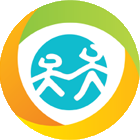CWDS Glossary
The CWDS Glossary includes a List of Acronyms and defined terms captured from various models, reports, and other artifacts pertaining to the Child Welfare System – California Automated Response and Engagement System (CWS-CARES) Project. The Glossary standardizes terms used across the various project disciplines; each term is defined with its meaning specific to the project domain.
The State may update the CWDS Glossary at any time. Any questions please contact CWDS Communications.
A B C D E F G H I J K L M N O P Q R S T U V W X Y Z
Simple Object Access Protocol (SOAP)
A messaging protocol that allows programs that run on disparate operating systems (such as Windows and Linux) to communicate using Hypertext Transfer Protocol (HTTP) and its Extensible Markup Language (XML).
Single Point of Contact (SPOC)
Is designated by the county as the principal point of contact for the CWDS office to communicate with the county/probation directly. This staff person will be included in the majority, if not all, of the communications that are sent by the CWDS office for informational purposes.
The SPOC is responsible for redistributing communications or sharing information with the appropriate individuals within the county that need to be aware of the information shared by the CWDS office. The SPOC also assists the CWDS office in facilitating surveys or inquiry responses that are sent by the CWDS office. Additionally, it is preferred that any inquiry by the county to the CWDS office should be initiated by, or include the SPOC.
Site Readiness
Each Site will conduct many Site Readiness tasks and activities in preparation for Go-Live and will undergo several checkpoints along the way to assess Site Readiness progress. The Site will be the final arbitrator of determining Site Readiness.
Site(s)
The location(s) for the State* and Contractor* Equipment* and Software*, as agreed to by State*.
Slack
Cloud-based collaboration software that enables users to create public or private channels to direct message, chat and post documents both in group forums and one-on-one communications. Supports integration with development tools and transparency to team efforts (e.g., support requests, code check-ins, and error logs) as well as supporting search across all channels in one central archive.
Small Family Home (SFH)
A residential facility in the licensee's family residence providing 24-hour a day care for six or fewer children who are mentally disordered, developmentally disabled or physically handicapped and who require special care and supervision as a result of such disabilities.
Smoke Test
Business Definition: A software testing technique performed post software build to verify that the critical functionalities of software are working fine. It is executed before any detailed functional or regression tests are executed. The main purpose of smoke testing is to reject a software application with defects so that QA team does not waste time testing broken software application.
Technical Definition: Also known as confidence testing, sanity testing, build verification test and build acceptance testing, smoke testing is preliminary testing to reveal simple failures severe enough to, for example, reject a prospective software release. Smoke tests are a subset of test cases that cover the most important functionality of a component or system, used to aid assessment of whether main functions of the software appear to work correctly. It is a set of tests run on each new build of a product to verify that the build is testable before the build is released into the hands of the test team.
Snapshot (SS)
Search for current demographic information, past child welfare history and connected relationships of clients entered in CWS/CMS.
SOC 158 Subsystem
An application within a component of the CWS/CMS that enables placement data from county probation departments and private adoption agencies to be entered via templates.
Social Security Administration (SSA)
A U.S. government agency that administers social programs covering disability, retirement, and survivors' benefits. It was created in 1935 by President Franklin D. Roosevelt. Previously operating under the Department of Health and Human Services, the SSA has operated as a wholly independent agency since 1994.
